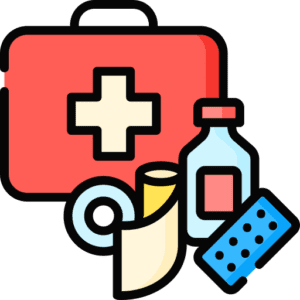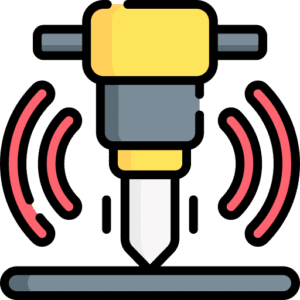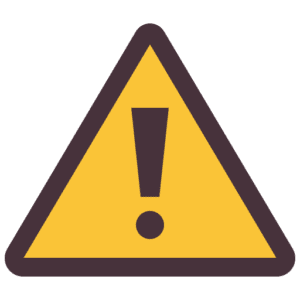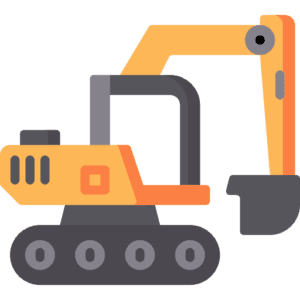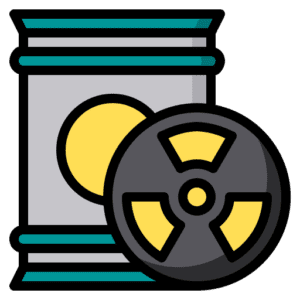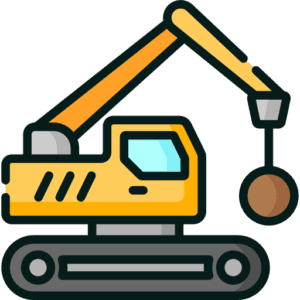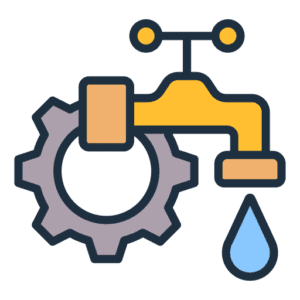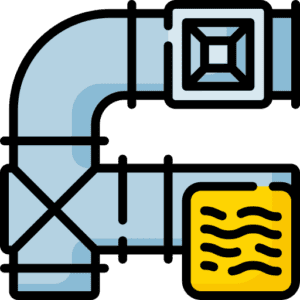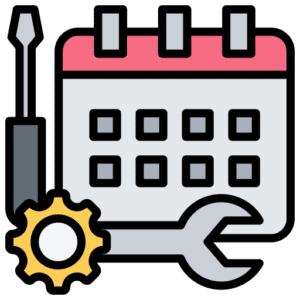CSCS Mock Test 2025: Your Ultimate Guide to Success
Practice CSCS Mock Test 2025 free:
Preparing for the CSCS Mock Test 2025 can be a game-changer in obtaining your Construction Skills Certification Scheme (CSCS) card. Whether new or renewing your card, using updated cscs practice tests can help you gain confidence and pass the exam.
These CSCS mock tests are meticulously designed to replicate the actual exam experience. These practice tests cover all essential topics, including health and safety, working practices and regulations, and health and welfare, ensuring you get thorough preparation. These CSCS practice tests offer flexible and convenient study options, allowing you to practice anytime, anywhere, absolutely free. Boost your confidence and enhance your chances of passing the CSCS exam on your first attempt. Start practicing today and take a significant step towards advancing your construction career with a CSCS card.
Why Take the CSCS Mock Test?
Key reasons to take the CSCS Mock Test include:
- Identifying knowledge gaps.
- Improving your time management skills.
- Increasing your confidence for the real exam.
Below are free mock tests designed to simulate actual test conditions.
CSCS Mock Test - Category-wise:
Section A: Working Environment
Section B: Occupational Health
Section C: Safety
Section D: High Risk Activities
Section E: Specialist
What to Expect in the 2025 CSCS Mock Tests?
The mock test for 2025 covers the following topics:
1. General Responsibilities:
You and your employer must ensure everyone’s safety on-site. This test covers essential topics, such as legal duties under the Health and Safety at Work Act. It also covers personal care and following site rules, such as using personal protective equipment (PPE).
The candidate’s ability to identify and report hazards, communicate effectively, and follow emergency procedures are tested.
This section highlights the need for a positive safety culture. It also stresses following regulations and understanding the risks of unsafe practices on construction sites.
2. Accident Reporting and Recording:
You must know when, how, and why accidents must be reported and recorded. This test ensures candidates understand the importance of accurately and promptly documenting workplace incidents.
This test includes knowledge of legal requirements for reporting accidents, near-misses, and hazardous conditions under regulations such as RIDDOR (Reporting of Injuries, Diseases, and Dangerous Occurrences Regulations). You must know how to complete accident report forms, communicate incidents to supervisors, and contribute to investigations to prevent future occurrences. Emphasis is placed on the role of accurate records in improving site safety and fulfilling legal and organizational responsibilities.
3. First Aid and Emergency Procedures:
What should you do in an emergency, and what must your employer make available? You must ensure that you are familiar with the actions to take during emergencies on a construction site. It includes recognizing common workplace injuries. It also explains the role of designated first aiders. Lastly, it shows how to access first aid equipment.
Candidates are tested on emergency procedures for specific sites. This includes evacuation plans, fire safety rules, and how to respond to incidents like falls or chemical spills. This section emphasizes the importance of staying calm, following established procedures, and promptly reporting emergencies to ensure the safety and well-being of everyone on site.
4. Personal Protective Equipment (PPE):
As a test taker, you should know why PPE is essential, why you should wear it, and who is responsible for it. It evaluates candidates’ understanding of the importance of wearing appropriate safety gear on construction sites. It covers the types of PPE that people often use. This includes helmets, high-visibility clothing, gloves, goggles, and safety boots. Each type has a specific purpose for protecting against hazards.
Candidates are tested on the proper use, maintenance, and storage of PPE and are responsible for ensuring compliance with site rules. This section emphasizes PPE’s critical role in minimizing risks and preventing injuries in hazardous work environments.
5. Environmental Awareness and Waste Control:
You should know your responsibilities on-site include managing waste and conserving energy. It assesses candidates’ understanding of minimizing environmental impact and managing waste responsibly on construction sites. It covers topics such as identifying hazardous materials, implementing waste segregation practices, and adhering to legal requirements like the Duty of Care for waste disposal.
Candidates learn the importance of preventing pollution, conserving resources, and protecting wildlife and ecosystems. This section tests your knowledge about sustainable practices, such as recycling and reusing materials, and promotes awareness of how construction activities can impact the environment.
6. Respiratory Hazards (Dust and fumes):
You should know how to work safely, protecting yourself and those around you from exposure to respiratory hazards. What health conditions may arise from exposure to dust and fumes. It focuses on identifying and managing risks associated with airborne hazards on construction sites. It covers the dangers of exposure to substances like silica dust, asbestos, and chemical fumes, which can cause serious health issues such as lung disease or respiratory irritation.
Candidates are tested on properly using respiratory protective equipment (RPE), implementing control measures like ventilation and dust suppression, and adhering to safe working practices. This section emphasizes the importance of minimizing exposure to protect long-term health and maintain a safe work environment.
7. Noise and Vibration:
You should know why it is essential to minimise exposure to noise and vibration in the workplace and how to protect yourself and those around you. It examines candidates’ awareness of the risks of excessive noise and vibration on construction sites. It covers the health effects of prolonged exposure, such as hearing loss or hand-arm vibration syndrome (HAVS).
Candidates are tested on identifying high-risk activities, implementing control measures like using low-vibration tools and hearing protection, and adhering to legal limits for exposure. This section emphasizes the importance of monitoring, regular equipment maintenance, and adopting safe working practices to protect workers’ health and well-being.
8. Health and Welfare:
You should have the basic knowledge of common health issues on site and how to avoid them. Providing welfare facilities and support on-site and awareness of mental health issues.
This test measures the candidate’s ability to understand the importance of maintaining physical and mental well-being on construction sites. It covers key topics such as access to clean drinking water, proper sanitation facilities, and appropriate rest areas.
Candidates are tested on recognizing signs of work-related stress, fatigue, and illnesses caused by poor hygiene or hazardous conditions. This section emphasizes the role of employers and workers in fostering a healthy workplace, promoting work-life balance, and ensuring compliance with welfare regulations to support overall well-being.
9. Manual Handling:
You should know why and how it is important to handle all loads using a safe work system. What key areas do you need to be aware of when handling loads?
This test focuses on the safe practices for lifting, carrying, and moving materials on construction sites to prevent injuries. It covers the principles of proper posture, body mechanics, and the importance of using tools or equipment to reduce physical strain.
Candidates are tested on recognizing the risks associated with manual handling tasks, such as back injuries or musculoskeletal disorders, and understanding when to seek help or use mechanical aids. This section emphasizes the importance of planning tasks, assessing the load, and following safe techniques to protect workers’ health and safety.
10. Safety Signs:
You should know what types of safety signs you will see on a construction site and what they are informing you of.
This test focuses on the recognition and understanding of various safety signs commonly found on construction sites. It covers the different types of signs, such as warning, prohibition, mandatory, and emergency signs, and their specific meanings. Candidates are tested on their ability to identify these signs and follow the instructions they provide to ensure site safety.
This section emphasizes the importance of being aware of safety signs to prevent accidents, stay compliant with regulations, and respond appropriately to potential hazards.
11. Fire Prevention and Control:
You should know what to do if you find a fire. Also, learn which fire extinguishers to use for different types of fires.
This test focuses on the knowledge and practices needed to prevent and manage fire risks on construction sites. It covers identifying potential fire hazards, such as flammable materials or faulty electrical equipment, and implementing preventive measures like proper storage and handling of hazardous substances. Candidates are tested on using fire extinguishers, fire alarms, and emergency evacuation procedures.
This section emphasizes the importance of site fire safety protocols, regular fire drills, and the role of all workers in minimizing fire risks and responding effectively in an emergency.
12. Electrical Safety and Tools:
You should also learn how to work safely with various tools. Discover what actions to take if someone does not check your tools or if they break.
This test focuses on safely using and maintaining electrical systems and tools on construction sites. It covers the risks associated with working near live electrical wires, faulty equipment, and electrical tools.
Candidates are tested on understanding how to safely handle electrical tools, perform basic inspections, and follow procedures for isolating and securing electrical systems. The section also includes safety measures for preventing electric shocks, fires, and other hazards and the importance of using insulated tools and personal protective equipment (PPE). This section emphasizes compliance with electrical safety regulations to protect workers from potential electrical hazards.
13. Site Transport and Lifting Operations:
You should learn how careful planning can keep pedestrians and vehicles apart. Understand the traffic rules you need to know. Discover how to lift loads safely.
This test focuses on safely managing vehicles, machinery, and lifting equipment used on construction sites. It covers the proper procedures for operating cranes, forklifts, and other lifting devices, ensuring they are used correctly to avoid accidents and injuries.
Candidates are tested on their understanding of safe transportation practices, such as checking equipment before use, securing loads, and following traffic management plans on-site. This section emphasizes the importance of training, communication, and following site-specific lifting plans to ensure safe and efficient operations during transportation and lifting tasks.
14. Working at Height:
You should know what types of equipment you will use for working at height and how you will use them correctly.
This test focuses on the safety measures and precautions required when working above ground level on construction sites. It covers fall protection systems, such as guardrails, safety nets, and personal fall arrest equipment like harnesses.
Candidates are tested on the importance of risk assessments, ensuring safe access and egress, and proper equipment maintenance. This section also includes understanding when and how to use scaffolding, ladders, and elevated work platforms safely. The goal is to minimize the risk of falls and ensure workers are equipped with the knowledge to work safely at height while complying with regulations.
15. Excavations and Confined Spaces:
You should know how to work safely in a confined space or excavation and what to do if exposed to specific hazards.
This test focuses on the safety protocols for working in or around excavations and confined spaces on construction sites. It covers the risks associated with digging trenches or working in enclosed environments, such as limited ventilation, potential for collapses, and hazardous atmospheres.
Candidates are tested on the use of protective systems, such as shoring or trench boxes, to prevent cave-ins and ensure safe entry and exit in confined spaces. The section emphasizes the importance of risk assessments, proper training, and adhering to safety regulations to avoid accidents and ensure worker safety in these high-risk situations.
16. Hazardous Substances:
You should know how you can identify a hazardous substance and what control measures should be in place to enable you to work safely.
This test focuses on identifying and safely handling materials that pose a risk to health or the environment on construction sites. It covers substances such as asbestos, chemicals, solvents, and dust, which can cause long-term health problems or immediate dangers like fires or explosions.
Candidates are tested on recognizing hazardous materials, understanding labeling and safety data sheets (SDS), and knowing the proper protective measures, including using personal protective equipment (PPE) and ventilation systems. This section emphasizes the importance of safe storage, disposal, and handling to minimize risks and ensure compliance with health and safety regulations.
Tips to Pass the CSCS Mock Test 2025
- Practice Regularly: Use free and premium online resources to practice mock tests.
- Review the latest materials and update your study materials for 2025.
- Understand Key Concepts: Focus on areas like hazard identification, risk assessment, and safety procedures.
- Simulate Test Conditions: Practice in a timed environment to mirror the pressure of the real test.
To prepare effectively for your CSCS test, begin by understanding the exam format, which includes
- multiple-choice questions
- multiple-choice questions with images
- drag-and-drop questions
- hot-spot questions on health and safety
- construction practices and regulations.
Utilize official study guides and practice materials from the CITB, and take online mock tests to familiarize yourself with the question types and exam environment. Create a structured study plan, allowing time for each topic and regular revision to reinforce your knowledge. Develop test-taking strategies such as reading questions carefully, managing your time, and eliminating wrong answers. On exam day, ensure you are well-rested, arrive early at the test center, and bring all necessary identification and documents. Following these steps will boost your confidence and increase your chances of passing the CSCS test.
For official resources, click here.
Where to Find Reliable CSCS Mock Tests for 2025?
At skilltests.co.uk, we provide a variety of free CSCS Mock Tests tailored for 2025. Our tests are designed to replicate the real test experience, helping you prepare effectively.
🚧 Ready to pass your CSCS test? 🛠️ Share this with your friends and help them prepare too! 💪
#CSCSMockTest #ConstructionSkills #TestPrep #StudyTips #BuildYourFuture













